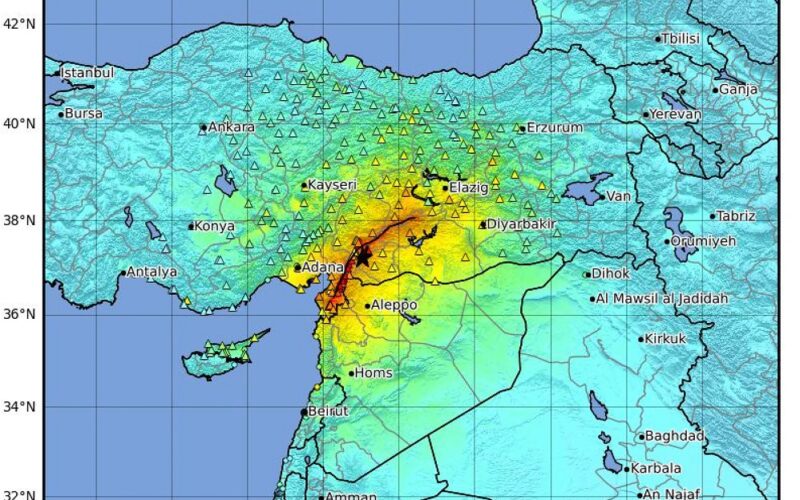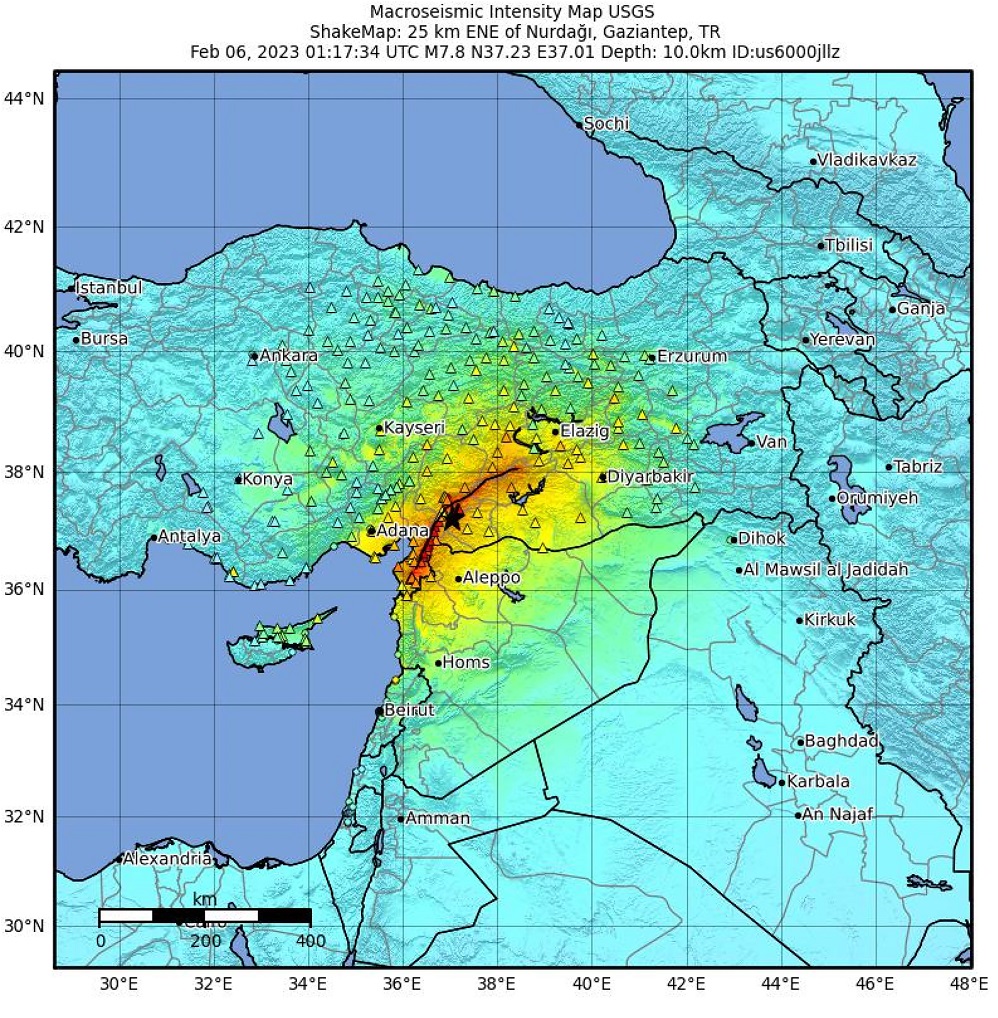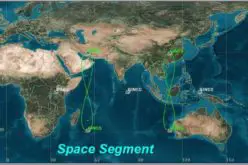Towards Earthquake Early Warning Systems: Insights from Satellite Data on the 2023 Türkiye Earthquake

Recent studies have revealed that satellite data detected anomalies in the ionosphere up to 19 days before the devastating earthquake in Turkey on February 6, 2023, highlighting the potential for developing Earthquake Early Warning Systems. This discovery, published in the Journal of Applied Geodesy, analyzed data from the Chinese seismo-electromagnetic satellite CSES-01 and the European Space Agency’s Swarm satellites. These anomalies included changes in land surface temperature, water vapor, methane levels, ozone, carbon monoxide, and ionospheric parameters such as electron density and temperature.
The research led by Professor Mehdi Akhoondzadeh from the University of Tehran highlighted that these anomalies appeared sequentially: starting from the ground, moving to the atmosphere, and finally manifesting in the ionosphere. This pattern suggests that these signals originate in the ground and propagate upward, potentially serving as precursors to seismic events.
Data Sources Used in the Study
The study utilized various satellite data sources to identify the anomalies preceding the 2023 Türkiye earthquake. The primary data sources included:
- CSES-01 (Chinese Seismo-Electromagnetic Satellite): This satellite is specifically designed to monitor electromagnetic phenomena in the Earth’s ionosphere. It provided crucial data on electron density and electron temperature anomalies.
- Swarm Satellite Mission (European Space Agency): Swarm consists of three satellites designed to measure the magnetic signals from the Earth’s core, mantle, crust, oceans, ionosphere, and magnetosphere. These satellites contributed data on the ionospheric anomalies observed before the earthquake.
- Additional Earth Observation Satellites: Data from other satellites helped measure land surface temperatures and atmospheric parameters such as water vapor, methane levels, ozone, and carbon monoxide.


Ground and Atmospheric Changes Signaling Earthquake
The study identified several key changes in the ground and atmosphere that signalled the impending earthquake:
- Land Surface Temperature Anomalies: Satellite data revealed that the land surface temperatures in the earthquake region showed significant anomalies 12-19 days before the event. These temperature changes are believed to result from the stress and strain in the Earth’s crust, which can alter the heat flow from the interior to the surface.
- Atmospheric Anomalies: Changes in atmospheric parameters such as water vapor, methane levels, ozone, and carbon monoxide were detected 5-10 days before the earthquake. These changes may be linked to the release of gases from the Earth’s crust due to the buildup of seismic stress, which can affect the composition of the atmosphere above the region.
Ionosphere’s Role in Predicting Earthquakes
The ionosphere, the layer of the Earth’s atmosphere that is ionized by solar and cosmic radiation, plays a critical role in earthquake prediction:
- Ionospheric Anomalies: The study detected anomalies in the ionosphere, including variations in electron density and electron temperature, 1-5 days before the earthquake. These anomalies are believed to be caused by the upward propagation of electromagnetic signals generated by seismic activity in the Earth’s crust.
- Mechanism of Anomaly Propagation: The observed sequence of anomalies—starting in the ground, moving to the atmosphere, and finally appearing in the ionosphere—suggests that seismic activities generate signals that propagate upward. This pattern helps in understanding the precursor signals that can be monitored to predict earthquakes.
- Potential for Early Warning Systems: By continuously monitoring the ionosphere for such anomalies, it may be possible to develop early warning systems that provide critical advance notice of earthquakes. This would allow for timely evacuation and preparation, potentially saving lives and reducing damage.
This finding holds promise for developing earthquake early warning systems. By continuously monitoring these parameters, it may be possible to provide advance notice of impending earthquakes, thus reducing the risk of damage and loss of life. However, researchers emphasize the need for further studies to refine these detection methods and reduce the rate of false alarms.
Source: Mehdi Akhoondzadeh, Analyses of data from the first Chinese seismo electromagnetic satellite (CSES-01) together with other earthquake precursors associated with the Turkey earthquakes (February 6, 2023), Journal of Applied Geodesy (2024). DOI: 10.1515/jag-2024-0024
Also Read:










